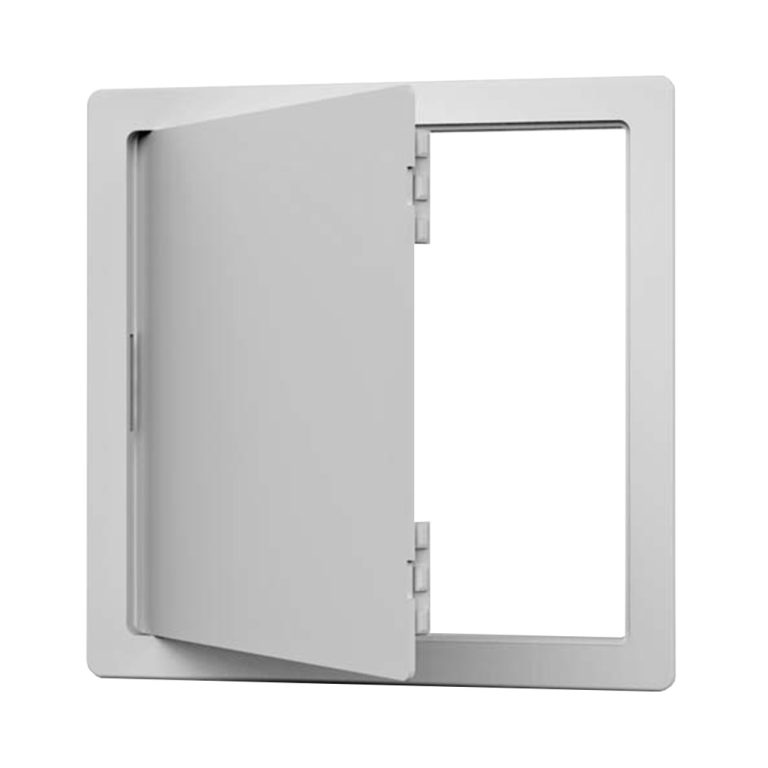The construction space is always changing, and currently, sustainable building is a necessity. Contractors and architects constantly search for strong, dependable materials that are also good for the planet.
Plastic access panels offer all these qualities. They bring together toughness, durability, and other environmental benefits, making them a practical option for construction.
This post discusses this access solution and why you should consider it in sustainable building projects.
Understanding Plastic Access Panels
A plastic access panel provides easy entry into the important systems inside a building, like pipes, electrical wires, or air conditioning. What sets it apart is the material it’s made from.
Plastic access panels are often made from advanced materials like ABS (Acrylonitrile Butadiene Styrene), PVC (Polyvinyl Chloride), and polypropylene. These materials are strong, chemical resistant, and can be easily moulded into different shapes.
Most panels also have smooth, flush finishes, hinged doors, removable doors, and many different sizes. They’re designed to blend seamlessly into any building project.
Why Plastic Access Panels Are an Eco-Friendly Option
Moving towards eco-friendly building goes beyond a trend—it’s a core part of modern-day construction.
Plastic panels have qualities that ensure sustainability and cost-effectiveness for contractors and architects. These include:
Strength and Durability
When building, you want every part to last a long time. Plastic access panels have the following features to ensure durability:
- Strength: These panels offer the toughness needed to withstand impact from regular use. They can take bumps and knocks in busy areas without getting dented or cracked.
- Corrosion Resistance: They’re naturally resistant to rust and corrosion, unlike some metallic panels. This means they won’t break down in damp or humid places like bathrooms or basements. This feature reduces how often you’ll need to replace or fix them.
- Chemical Resistance: Plastic panels, especially made from polypropylene or PVC materials, resist common cleaning products and household chemicals. This makes their look and function stay intact over time.
- Weather Resistance: They keep their shape and won’t warp or sag, even when temperatures or humidity change. Their reliable fit and performance show how tough they are.
- UV Stabilisation: Plastic is susceptible to UV damage when exposed to direct sunlight over time. As such, most plastic access panels come enhanced with UV stabilisers to help maintain their integrity and look over time.
Recyclability
Many plastic access panels contain large amounts of recycled content. This means fewer new resources are used to make them. Even better, they can often be recycled after they’ve served their long purpose.
This creates a closed-loop system, which reduces waste and helps the environment.
Energy Efficiency
Producing plastic panels often takes less energy than the intense processes for materials like metal. This means a smaller carbon footprint for projects.
Additionally, because they are lightweight, less fuel is burned during transportation from the factory to construction sites, further lowering emissions.
Design Flexibility
From a design point of view, plastic access panels offer flexibility for eco-projects. Owners can easily paint them to match any decor, making them blend into any green building design.
Their clean, smooth finish gives a modern, professional feel. This improves the overall appearance without sacrificing environmental goals. The flexibility lets architects keep things looking great while choosing sustainable materials.
Green Building Compliance
In addition to being recyclable and using less energy, many modern plastic panels are non-toxic. They don’t release harmful chemicals called VOCs (Volatile Organic Compounds).
This helps maintain indoor air quality, a key part of healthy building design.
All these qualities make plastic access panels a great choice for projects aiming for green building certifications like BREEAM or LEED.
Installation Best Practices for Plastic Panels in Construction and Renovation
Installing plastic access panels is straightforward and makes things much more efficient for contractors. Because they’re light and often have simple snap-in or screw-in designs, they greatly reduce the time and cost of labour. For the best results:
- Follow the Manufacturer’s Guide: Always follow specific instructions for each panel type, especially for opening sizes and how to attach them.
- Make Sure Surfaces Are Level: For a perfect fit, the surface where the panel goes must be flat and straight. This prevents gaps and helps maintain temperature control.
- Use the Right Fasteners: Depending on the wall material (like plasterboard or brick), choose the correct screws or glues for a strong, lasting hold.
- Prepare for Painting or Finishing: If planning to paint the panels, prepare their surface so the paint sticks well and looks smooth. Proper prep improves quality and performance.
- Think About Future Access: Plan where to put the panels carefully to ensure it’s easy to get to the hidden systems later for maintenance.
Plastic Access Panels: A Smart, Sustainable Choice
Plastic access panels offer impressive durability, resist corrosion and impact, and withstand various conditions. They’re also a cost-effective, eco-friendly choice: recyclable, energy-efficient, and free from harmful VOCs
Their design flexibility, aesthetic appeal, and easy installation enhance their appeal for sustainable projects. Ultimately, choosing plastic panels means embracing a smart, responsible approach to building and renovations contactor architects alike.


